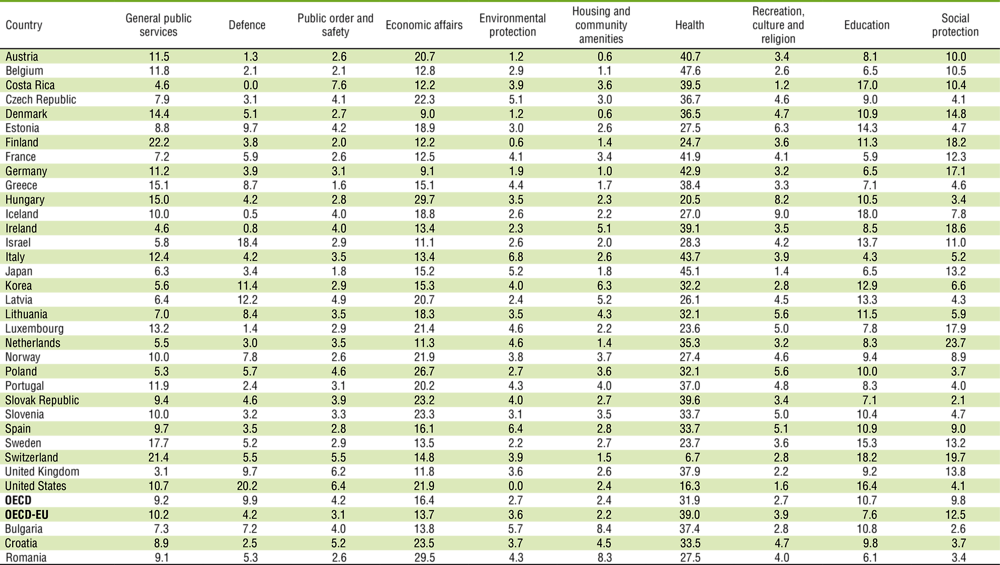Governments procure large amounts of goods and services to help them implement policies and deliver public services. As the COVID-19 crisis demonstrated, public procurement strategies, practices and systems directly affect the quality of life and wellbeing of citizens. It is important that countries aim for maximum efficiency, effectiveness and value for money in public procurement.
Public procurement expenditure as a share of GDP increased significantly across the OECD over the last decade, from 11.8% of GDP in 2007 to 12.9% of GDP in 2021. Recent years have seen further increases in the share of public procurement relative to GDP. Across OECD-EU countries, public procurement increased from 13.7% of GDP in 2019 to 14.8% in 2021. This increase is mainly due to the Recovery and Resilience Facility (RRF), the centrepiece of Europe’s recovery plan, boosting public investment. Public procurement expenditures as a share of GDP also increased in Japan (from 16.6% to 18.1%) and the United Kingdom (13.1% to 15.7%) (Figure 7.1).
On the other hand, public procurement relative to total government expenditures fell by 1.9 percentage points across OECD countries between 2019 and 2021. This could be explained by the overall increase on spending due to the economic support measures introduced during the COVID-19 pandemic. Recovery and resilience plans could further consolidate this trend since they comprise a mix of tax incentives, grants and loans guarantees in addition to public investments channelled through public procurement. The US government has committed to USD 479 billion in new climate and energy spending through the Inflation Reduction Act (IRA) and the Infrastructure Investment and Jobs Act, which was adopted in late 2021. Although the implementation of recovery and resilience plans takes place at different levels of government, it has not affected the distribution of public procurement expenditure between the different levels of government. The distribution between central and sub-national governments’ overall public procurement spending remains broadly unchanged with 61.2% of OECD countries’ procurement spending at the sub-national level in 2021 (Online Figure G.4.2).
Public procurement is used across all spending functions, from health to environmental protection, public order and economic affairs (comprising infrastructure, transport, communication, energy and R&D). As in previous years, health accounted for the largest share of public procurement spending, at 31.9% on average across OECD countries in 2021, up from 29.3% in 2019. This was followed by economic affairs (16.4%), education (10.7%), defence (9.9%) and social protection (9.8%) with relatively small variations across countries. Health is the only category where spending increased, due to intensive procurement of health products in the COVID-19 pandemic (Online Table G.4.1). Belgium, Japan and Italy spent more than 43% of public procurement expenditure in the health sector. Exceptions include Hungary and the United States, where economic affairs represented the largest share of government spending, and Switzerland, where general public services and social protection have the largest share (Table 7.2).


